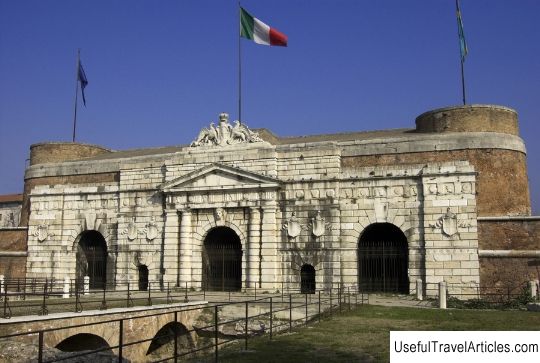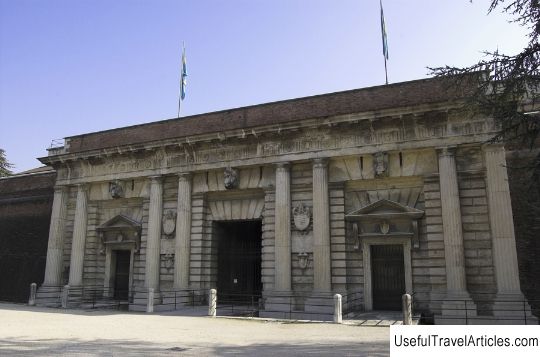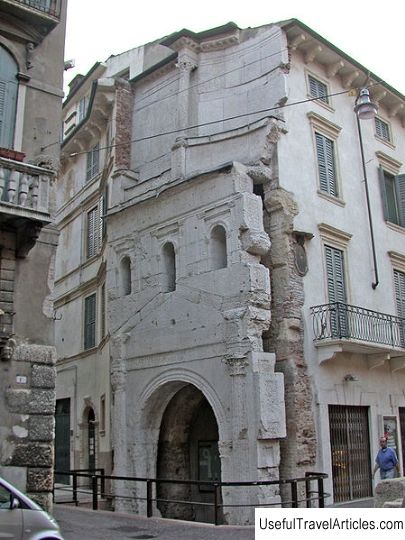Porta Nuova description and photos - Italy: Verona
Rating: 8,1/10 (2543 votes) 
Porta Nuova description and photos - Italy: Verona. Detailed information about the attraction. Description, photographs and a map showing the nearest significant objects. The title in English is Porta Nuova. Photo and descriptionPorta Nuova is one of the "youngest" gates of Verona, built by the architect Michele Sanmicheli in 1535-1540 on the site of the Porta Santa Croce gate, installed in the era of the Scaligers. Porta Nuova was built along with the city's defensive fortifications, and the Porta Palio gate was also built at the same time. In 1797, at the very beginning of French rule on the Apennine Peninsula, the coats of arms of the Venetian Republic were erased from the gates. In the middle of the 19th century, the Austrians, who became the masters of Verona by the decision of the Vienna Congress, started the reconstruction of the historical monument: they added side chapels and covered the facade with volcanic tuff. Only the central part of Porta Nuova has come down to us in its original form. Today it is from these gates, decorated with the head of Jupiter, that Porta Nuova street begins, which leads to the main city square - Piazza Bra. Porta Nuova is located between the Reformed bastion and the Holy Trinity bastion. The rectangular base is divided into several aisles, the central of which serves as a driveway. The side aisles were intended for pedestrians and sentry guards. In the 18th century, the addition of two passable arches changed the original layout of the gate. On a flat roof with round turrets in the corners, artillery pieces were installed, protected from the sides by battlements. The Doric facade of Porta Nuova, facing the village, is made in the classic style of triumphal arches - with a central main entrance and two small side arches, to which two large vaults were added in the 18th century. It is faced with simple stone. The lion of Saint Mark, which once adorned the gate, was replaced by a sculptural composition with two griffins, between which a traditional "coat of arms" two-headed eagle, later scraped off, loomed. The facade facing the city, clad with tuff and bricks, had two window openings and two small passages on the sides, which were destroyed in the 18th century to install a pair of large arched vaults. On the southern facade, the Savoy coat of arms flaunts, added here after October 16, 1866 - the day when Verona became part of a unified Italy.    We also recommend reading Altai State Natural Reserve description and photos - Russia - Siberia: Altai Republic Topic: Porta Nuova description and photos - Italy: Verona. |




